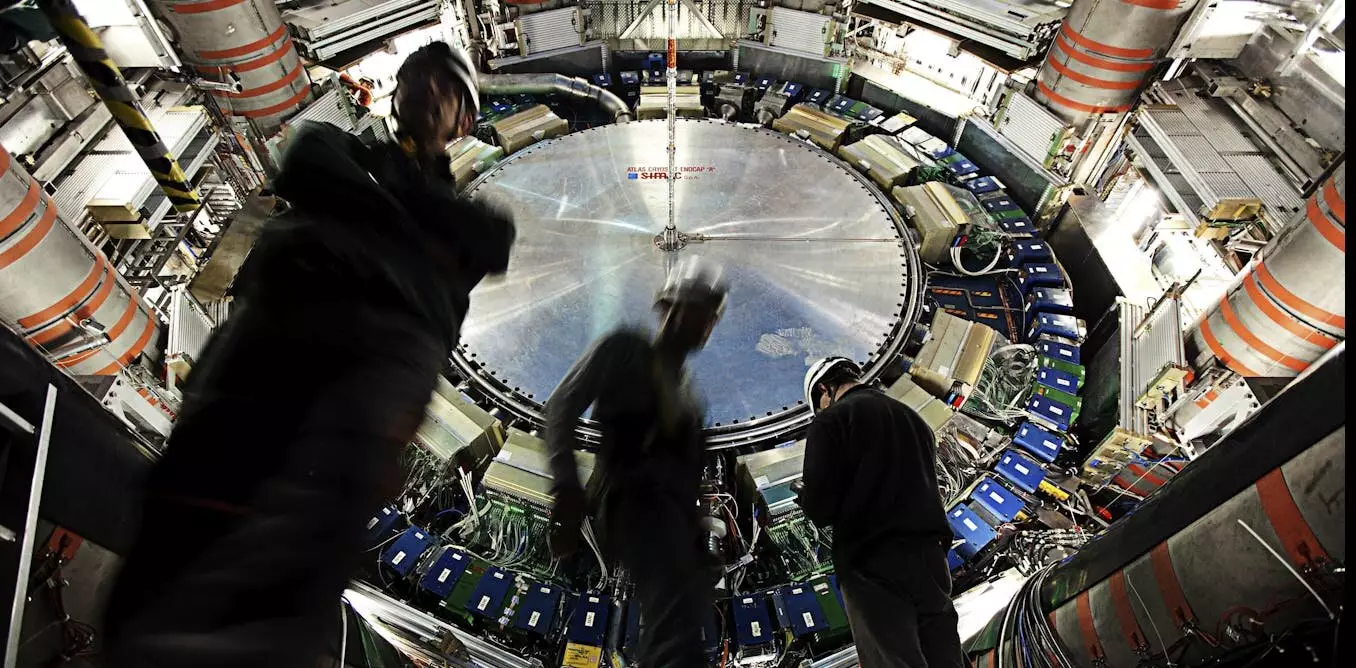The realm of quantum physics has long captivated the imagination of scientists and the general public alike, particularly due to its counterintuitive principles that defy our everyday understanding of the universe. One of the most intriguing phenomena within this field is quantum entanglement, where particles become interconnected in a manner that transcends classical physics. Recent groundbreaking findings from the Large Hadron Collider (LHC) have propelled our understanding of this phenomenon into new heights, specifically through the study of entangled pairs of top quarks, the heaviest known particles.
At its core, quantum entanglement represents a scenario where two or more particles exist in a linked state regardless of the distance separating them. Traditionally, we perceive objects as either disconnected or connected—two separate entities versus two items bound by a physical medium. However, entangled particles exhibit a relationship that eludes this binary classification. For instance, measuring a property of one particle instantaneously influences the state of its partner, regardless of the spatial gap. This non-local interaction offers a compelling glance into the complexities of quantum entanglement, as famously illustrated by the analogy of two triggers in a game of chess that respond simultaneously, revealing a level of unity in their existence, despite physical separation.
Such concepts were popularized in various forms of media, including the renowned sci-fi series “3 Body Problem,” where a technologically advanced alien civilization utilizes entanglement to communicate seamlessly across vast distances. However, while the portrayal of instantaneous communication may entertain, it overlooks a crucial fact: quantum entanglement, in reality, does not permit the transmission of information faster than light. Rather, it is a space where the intrinsic properties of particles challenge our conventional notions of action and reaction in the cosmos.
The Large Hadron Collider, nestled on the border of France and Switzerland, stands as a monumental achievement in the pursuit of fundamental physics. Its advanced infrastructure allows physicists to conduct extensive experiments at unprecedented energy levels. The recent ATLAS experiment has made significant strides by identifying entanglement in pairs of top quarks, a remarkable feat given the top quark’s status as the heaviest particle in the Standard Model of particle physics.
Scientists have historically observed entanglement at lower energy levels with particles like photons and atoms. However, the unique properties of top quarks present an exciting frontier for research. Each top quark possesses a mass approximating that of a tungsten atom, raising questions about its behavior and the forces that govern it. This massiveness serves as both a challenge and an opportunity for researchers; while it complicates measurements, it also enhances the potential for exciting discoveries regarding the particle’s interactions and the quantum behaviors associated with it.
Implications and Future Directions in Quantum Physics
The groundbreaking findings at the LHC are not merely academic curiosities; they hint at deeper truths regarding the fabric of the universe. Scientists harbor hopes that the investigation into entangled top quarks might shed light on potential new forces or phenomena not currently described by our existing physical models. The 21st century is poised for a broader understanding of the principles underlying the cosmos, informed significantly by quantum entanglement.
Moreover, the quest for practical applications from quantum mechanics is gaining momentum. Innovations in quantum computing and advanced cryptography systems, for instance, are being driven by the unique properties that arise from entangled states. While the direct manipulation of top quarks may not yield straightforward technological tools—given the impracticality of transporting the colossal LHC—these particles provide unparalleled opportunities to conduct experiments that could lead to transformative advancements in multiple scientific domains.
Quantum entanglement exemplifies the richness of the quantum world—a place where normal intuitions crumble under the pressure of complex scientific truth. The work being pioneered at the Large Hadron Collider stands to redefine how we comprehend the intricacies of particle physics, particularly in light of discoveries related to the enigmatic top quark. As research continues, the potential for revealing new forces or interactions inspires hope for deeper insights not only into quantum mechanics but also into the fundamental structure of our universe itself. The journey into quantum entanglement is just beginning, leading us toward an era where the complexities of the universe may gradually become a mosaic comprehensible to the human mind.


Leave a Reply